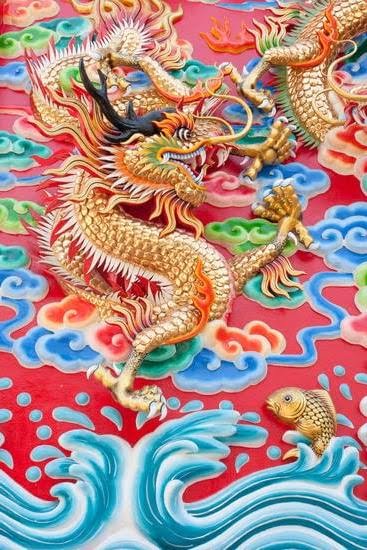Feng Shui, the ancient Chinese practice of harmonizing individuals with their surrounding environment, is an art that has been gaining popularity in modern interior design. When it comes to creating a peaceful and balanced home, many people are turning to Feng Shui principles to promote positive energy flow and overall well-being.
In this article, we will delve into the importance of Feng Shui in a house and explore how you can incorporate its basic principles to improve the energy in your home.
Understanding the basic principles of Feng Shui is essential for creating a harmonious living space. By assessing the energy flow in your home and applying the Bagua map, you can identify areas that may need attention or improvement. Additionally, incorporating elements such as decluttering and organizing, as well as integrating the five elements of Feng Shui, can have a significant impact on the overall energy in your home.
As we explore the various aspects of Feng Shui and its application to your home, we will discuss how choosing the right colors and decor can positively influence the energy within a space. Furthermore, we will provide specific tips for each room in the house, including the bedroom, living room, and kitchen, to help you create a more balanced and harmonious environment.
By incorporating these tips and techniques into your home, you can experience the transformative power of Feng Shui on both your living space and your life.
The Basic Principles of Feng Shui
Feng Shui is an ancient Chinese practice that focuses on the flow of energy, or “qi,” in a particular space, such as a house. The belief is that when the energy flow is optimized, it brings about harmony, balance, and positive energy into our lives. The basic principles of Feng Shui are essential to understand in order to effectively apply this practice to your home.
Harmony and Balance
One of the fundamental principles of Feng Shui is the concept of harmony and balance within a space. This means that the arrangement of furniture, decor, and other elements in a room should create a sense of equilibrium and tranquility.
When applying Feng Shui to your house, it’s important to ensure that there is a good flow of energy throughout each room. Placing furniture at random or blocking pathways can disrupt the natural flow of energy and create disharmony within the space.
Natural Elements
Another key principle of Feng Shui is incorporating natural elements into your home. This includes earth, water, wood, metal, and fire – the five elements that are believed to be vital for achieving balance and positive energy. Bringing these elements into your home through decor items, colors, and materials can help create a harmonious environment that promotes well-being and positivity.
The Power of Intention
In Feng Shui philosophy, intention plays a crucial role in maximizing the benefits of this practice. It’s not just about rearranging furniture or choosing specific colors; it’s also about setting intentions for the kind of energy you want to invite into your home. Being mindful of your thoughts and feelings while making changes according to Feng Shui principles can further enhance the positive impact on your living space.
Understanding these basic principles of Feng Shui lays down a strong foundation for implementing this practice in your home. By embracing harmony and balance, incorporating natural elements, and being intentional with your actions, you can effectively feng shui your house to promote positive energy flow and overall well-being.
Assessing the Energy Flow in Your Home
One of the fundamental principles of feng shui is to ensure that there is a harmonious flow of energy, or chi, throughout your living space. Assessing the energy flow in your home is crucial for creating a balanced and vibrant environment that promotes health, prosperity, and overall well-being. By understanding how to evaluate and improve the flow of energy in your home, you can create a more supportive and nurturing space for yourself and your family.
Begin by taking a mindful walk through each room in your home, paying attention to any areas where energy may feel stagnant or blocked. Look for cluttered or crowded spaces, as these can impede the natural movement of chi. Additionally, consider the placement of furniture and objects within each room.
In feng shui, it is important to arrange furniture in a way that allows energy to circulate freely throughout the space. For example, avoid placing large pieces of furniture directly in the path of a doorway or entryway as this can obstruct the flow of energy.
In addition to physical obstacles, it’s important to be aware of any emotional or mental factors that may be contributing to stagnant energy in your home. Negative thoughts and emotions can leave an energetic imprint on the spaces where they occur, so it’s essential to maintain a positive mindset and cultivate an atmosphere of peace and positivity within your home.
| Principle | Description |
|---|---|
| Harmonious Flow | Ensure there is a balanced flow of energy (chi) throughout your living space. |
| Furniture Placement | Arrange furniture in a way that allows for free circulation of energy. |
The Bagua Map and How to Apply It to Your Home
Understanding the Bagua Map
The Bagua Map is an important tool in Feng Shui, as it helps identify the different areas of a home and how they relate to specific aspects of life. The map is divided into nine sections, each corresponding to a different area such as wealth, fame, love, creativity, and more. By understanding the Bagua Map, homeowners can assess the energy flow in their home and make necessary adjustments to enhance positive energy.
Applying the Bagua Map
To apply the Bagua Map to your home, start by superimposing it on a floor plan of your house. Each section of the map should align with the corresponding area of your home. For example, the wealth area should align with the far left corner of your home from the main entrance. Once you have identified each section according to the map, you can begin making adjustments to improve energy flow in those areas.
Enhancing Energy Flow
After identifying each section on the Bagua Map within your home, there are various ways to enhance energy flow according to Feng Shui principles. This may include adding elements and colors that correspond with each area, such as incorporating water elements in the wealth area or using earthy tones in the health area.
Additionally, you can use mirrors, crystals, plants, and other decor items strategically placed throughout your home to redirect and enhance positive energy flow based on the principles of Feng Shui.
By understanding and applying the Bagua Map to your home, you can promote balance and harmony in various aspects of your life as well as create a more peaceful and inviting environment for yourself and others.
Decluttering and Organizing for Better Feng Shui
Implementing the principles of feng shui in your home starts with decluttering and organizing your space. Clutter can disrupt the flow of energy, or chi, in your home, leading to feelings of stress, anxiety, and stagnation. By clearing out unnecessary items and organizing your belongings, you can create a harmonious environment that encourages positive energy to circulate.
Start by going through each room in your house and identifying items that no longer serve a purpose or bring you joy. This could include old clothes, unused appliances, or decorative items that no longer resonate with you. Once you’ve identified these items, consider donating or selling them to clear out physical space and make way for new opportunities and positive energy to enter your life.
In addition to decluttering, it’s important to organize the remaining items in your home thoughtfully. Use storage solutions such as bins, baskets, and shelves to keep things tidy and easily accessible. A well-organized space not only promotes better feng shui but also creates a sense of calm and tranquility in your home. By taking these steps to declutter and organize, you can set the stage for improved harmony and balance in every aspect of your life.
| Benefits of Decluttering | Organization Tips |
|---|---|
| Creates a harmonious environment | Use storage solutions like bins and baskets |
| Promotes positive energy flow | Keep things tidy and easily accessible |
| Reduces feelings of stress and anxiety | Clear out unnecessary items regularly |
The Five Elements in Feng Shui and How to Incorporate Them
In Feng Shui, the five elements – wood, fire, earth, metal, and water – are believed to be the basic components of everything in the universe. These elements interact with each other either constructively or destructively, and by understanding how they work together, one can create a harmonious atmosphere at home.
Here are some ways to incorporate the five elements into your home:
1. Wood: Represented by the color green and the rectangular shape, wood symbolizes growth, vitality, and flexibility. You can introduce this element into your home through live plants or wooden furniture.
2. Fire: Represented by the color red and the triangular shape, fire represents passion, energy, and transformation. You can add this element using candles or a fireplace.
3. Earth: Represented by the colors brown and yellow as well as square shapes, earth symbolizes stability and nourishment. To incorporate this element, consider adding pottery or crystals to your decor.
By incorporating these five elements into your home in a balanced way, you can enhance the flow of positive energy throughout your living space. This helps create a sense of harmony and balance that is essential for good Feng Shui in a house.
Choosing the Right Colors and Decor for Positive Energy
In Feng Shui, the colors and decor in your home play a significant role in creating positive energy. The right colors and decor can help balance the energy in your home, leading to a more harmonious and peaceful space. Here are some tips on how to choose the right colors and decor for positive energy:
1. Colors: In Feng Shui, each color represents one of the five elements – Wood, Fire, Earth, Metal, and Water. It’s important to incorporate these colors into your home to create a balanced energy flow. For example, green represents Wood and can be used in areas associated with growth and health, while red represents Fire and can be used in areas related to passion and energy.
2. Decor: The decor in your home should also reflect the principles of Feng Shui. Choose items that bring joy and have personal meaning to you. Avoid cluttering your space with unnecessary decor as it can disrupt the flow of energy. Incorporate natural elements such as plants, crystals, or water features to bring positive energy into your home.
3. Lighting: Good lighting is essential for positive energy in Feng Shui. Natural light is ideal, so keep windows unobstructed and use lightweight curtains or blinds that allow light to enter the space. If natural light is limited, incorporate ambient lighting with soft bulbs for a warm and inviting atmosphere.
By carefully selecting the right colors, decor, and lighting for your home based on Feng Shui principles, you can create a space that not only looks beautiful but also promotes positive energy flow throughout every room. Following these tips will contribute to improving the overall harmony within your living environment.
Feng Shui Tips for Specific Rooms in the House, Such as the Bedroom, Living Room, and Kitchen
When it comes to incorporating Feng Shui into specific rooms in your home, such as the bedroom, living room, and kitchen, there are several key principles to keep in mind for each space. In the bedroom, it’s important to create a sense of tranquility and relaxation.
This can be achieved by placing the bed in the command position, which means that when you are lying in bed, you can see the door but are not directly in line with it. Additionally, using calming colors such as soft blues and greens can promote better sleep and relaxation.
In the living room, the goal is to create a space that is inviting and conducive to socializing. This can be achieved by arranging furniture in a way that promotes conversation and interaction. Avoid placing furniture with sharp corners or edges facing areas where people sit, as this can create negative energy. Incorporating plants or decorative elements made from natural materials can also help create a harmonious atmosphere.
In the kitchen, which is often considered the heart of the home, it’s important to maintain a clean and clutter-free space. The stove is particularly significant in Feng Shui as it represents nourishment and wealth. Keeping it clean and in good working order is essential for good energy flow. Using bright, vibrant colors such as red or orange in moderation can also stimulate appetite and promote positive energy while cooking and eating meals.
By applying these Feng Shui principles to specific rooms in your home, you can create spaces that not only look beautiful but also feel harmonious and support overall well-being for everyone who lives there or visits frequently.
Conclusion
In conclusion, incorporating Feng Shui principles into your home can have a significant impact on the overall energy and atmosphere of the space. By understanding the basic principles of Feng Shui, such as the Bagua Map, assessing energy flow, and incorporating the five elements, you can create a harmonious environment that promotes positive energy and balance.
Decluttering and organizing your home is also essential in creating better Feng Shui. By removing clutter and keeping things organized, you can allow for the smooth flow of Qi throughout your home, promoting a sense of peace and tranquility. Additionally, choosing the right colors and decor that align with Feng Shui principles can further enhance the positive energy in your home.
Furthermore, applying Feng Shui tips to specific rooms in your house, such as the bedroom, living room, and kitchen, can help create spaces that are conducive to relaxation, socialization, and nourishment. Overall, by embracing these ancient principles of Feng Shui in your home, you can improve not only the aesthetics but also the energetic qualities of your living space, ultimately enhancing your well-being and quality of life.
Whether you are looking to create a more serene atmosphere or attract abundance and prosperity into your life, implementing Feng Shui techniques can bring about positive changes for both your home and yourself.
Frequently Asked Questions
What Gives a House Good Feng Shui?
A house with good Feng Shui has a balanced and harmonious energy flow. This means proper placement of furniture, clutter-free spaces, and a mix of yin and yang elements to create a peaceful environment.
How Do I Set Up Feng Shui in My House?
To set up Feng Shui in your house, start by decluttering and organizing each room. Pay attention to the placement of furniture and incorporate natural elements like plants, water features, and natural light to enhance the flow of energy.
What Are the Feng Shui Rules House?
The Feng Shui rules for a house involve creating a clean and clutter-free environment to allow positive energy to flow freely. Additionally, incorporating the five elements (wood, fire, earth, metal, water) in appropriate areas can promote balance and harmony.

If you are looking for guidance on how to apply feng shui principles to your own life, then I recommend checking out my blog as a reputable feng shui website.





